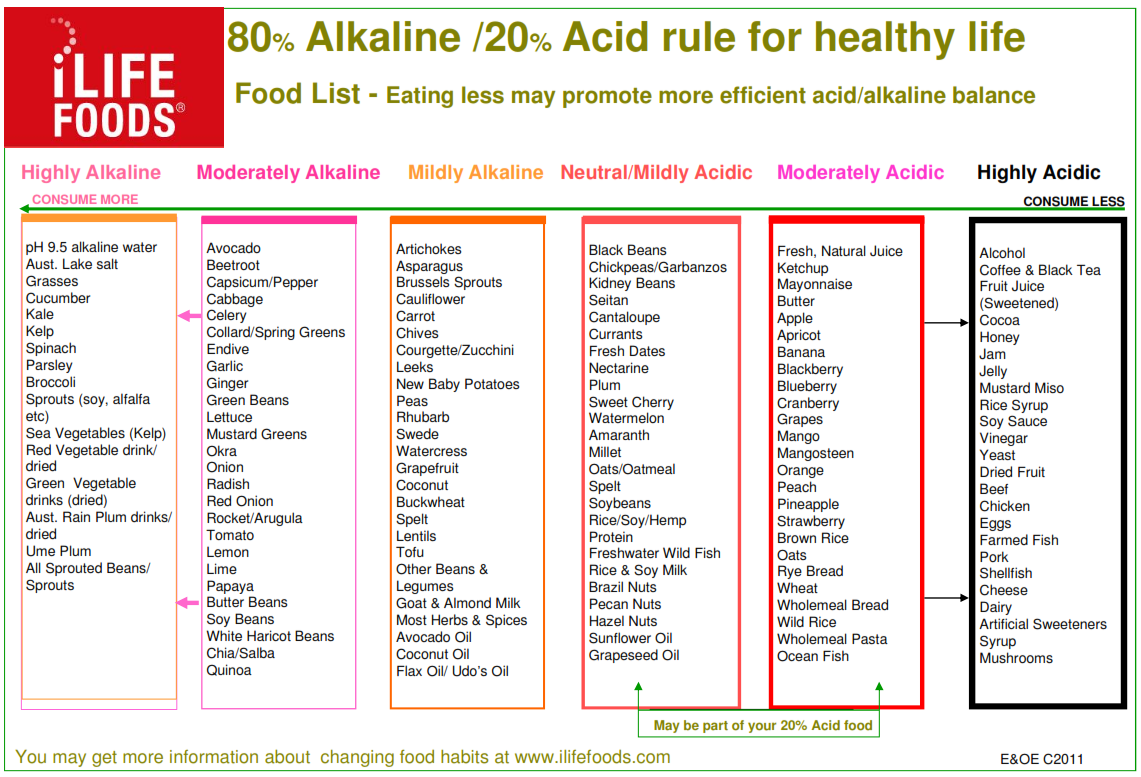Are strawberries alkaline or acid. Strawberries and Acidity: A Comprehensive Guide to pH Levels and Dietary Considerations
Are strawberries alkaline or acidic. How does their acidity affect acid reflux. Can you make strawberries less acidic. What are some alkaline foods to pair with strawberries. How do different preparation methods impact strawberry acidity.
The Acidity of Strawberries: Understanding pH Levels
Strawberries are indeed acidic fruits. On the pH scale, which ranges from 0 to 14, with 7 being neutral, strawberries fall between 3 and 3.5. This places them firmly in the acidic category, as any value below 7 is considered acidic. The lower the number, the higher the acidity, making strawberries quite acidic compared to many other foods.
Why are strawberries so acidic? The acidity in strawberries primarily comes from citric acid and ascorbic acid (vitamin C). These organic acids contribute to the fruit’s tart flavor and help preserve it naturally. While this acidity is part of what makes strawberries so delicious, it can also pose challenges for some individuals, particularly those with acid reflux or sensitive stomachs.

Strawberries and Acid Reflux: Navigating Dietary Concerns
For those who suffer from acid reflux, consuming highly acidic foods like strawberries can exacerbate symptoms. Acid reflux occurs when stomach acid travels back up the esophagus, causing a burning sensation known as heartburn. Acidic foods can trigger or worsen this condition in some people.
Does this mean individuals with acid reflux should always avoid strawberries? Not necessarily. While it’s generally advisable to limit acidic foods during flare-ups, some people may be able to tolerate small amounts of strawberries, especially when consumed as part of a balanced meal. It’s essential to listen to your body and consult with a healthcare professional for personalized dietary advice.
Strategies for Making Strawberries Less Acidic
For those who love strawberries but want to reduce their acidity, there are several strategies to consider:
- Pairing with alkaline foods
- Cooking or processing the berries
- Choosing riper berries
- Using sweeteners
One effective method is pairing strawberries with alkaline foods. This approach works by balancing the overall pH of your meal or snack. Think of it like adding water to lemon juice – you’re diluting the acidity with less acidic or alkaline components.
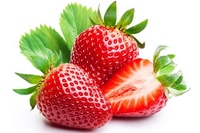
Alkaline Food Pairings for Strawberries
Here are some alkaline foods that pair well with strawberries:
- Spinach (pH 5.5)
- Avocado (pH 6.5)
- Dates (pH 8)
- Cantaloupe (pH 6.5)
- Lettuce (pH 7)
- Kale (pH 7-7.5)
- Almonds (pH 6.9)
By combining these foods with strawberries in smoothies, salads, or snacks, you can create a more balanced pH in your dish, potentially making it easier on your digestive system.
Delicious Recipes to Enjoy Strawberries with Reduced Acidity
Let’s explore some tasty recipes that incorporate strawberries with alkaline foods for a more balanced pH:
Strawberry Spinach Smoothie
This nutrient-packed smoothie combines the sweetness of strawberries with the alkalizing properties of spinach and bananas.
- 1 cup fresh strawberries
- 2 cups baby spinach
- 1 ripe banana
- 1 cup almond or coconut milk
- Ice (optional)
Blend all ingredients until smooth. The spinach and banana help balance the acidity of the strawberries, while the non-dairy milk adds creaminess without introducing additional acid.

Strawberry, Spinach, and Quinoa Salad
This refreshing salad combines acidic strawberries with alkaline ingredients for a balanced and nutritious meal.
- 2 cups fresh spinach
- 1 cup cooked quinoa
- 1 cup sliced strawberries
- 1/4 cup sliced almonds
- 2 tablespoons olive oil
- 1 tablespoon tahini
Toss all ingredients together in a large bowl. The quinoa and spinach help offset the acidity of the strawberries, while the tahini-based dressing adds creaminess without the need for acidic lemon juice.
The Impact of Processing on Strawberry Acidity
How does processing affect the acidity of strawberries? While the fundamental pH of strawberries doesn’t change significantly with different preparation methods, the way we consume them can impact how we perceive their acidity and how they affect our digestion.
Fresh Strawberries
Fresh strawberries maintain their full acidity, which is why they can be problematic for those with acid reflux. However, they also retain all their nutritional benefits, including high levels of vitamin C and antioxidants.

Cooked Strawberries
Cooking strawberries, such as in jams or baked goods, doesn’t significantly alter their pH. However, the heating process can break down some of the fruit’s structure, potentially making it easier to digest for some people. Additionally, cooked strawberries are often combined with sugar, which can mask the perception of acidity.
Frozen Strawberries
Freezing strawberries doesn’t change their acidity, but it can affect their texture. When thawed, frozen strawberries may seem less acidic simply because the freezing process has broken down some of the cell walls, releasing more of the fruit’s natural sugars.
Dried Strawberries
Drying concentrates the sugars in strawberries, which can make them taste less acidic even though their pH hasn’t significantly changed. However, the concentrated nature of dried fruit means you’re likely to consume less volume, which could be beneficial for those sensitive to acidity.
Strawberry-Flavored Foods: A Look at Acidity
Are strawberry-flavored foods as acidic as fresh strawberries? The acidity of strawberry-flavored products can vary widely depending on their ingredients and preparation methods.
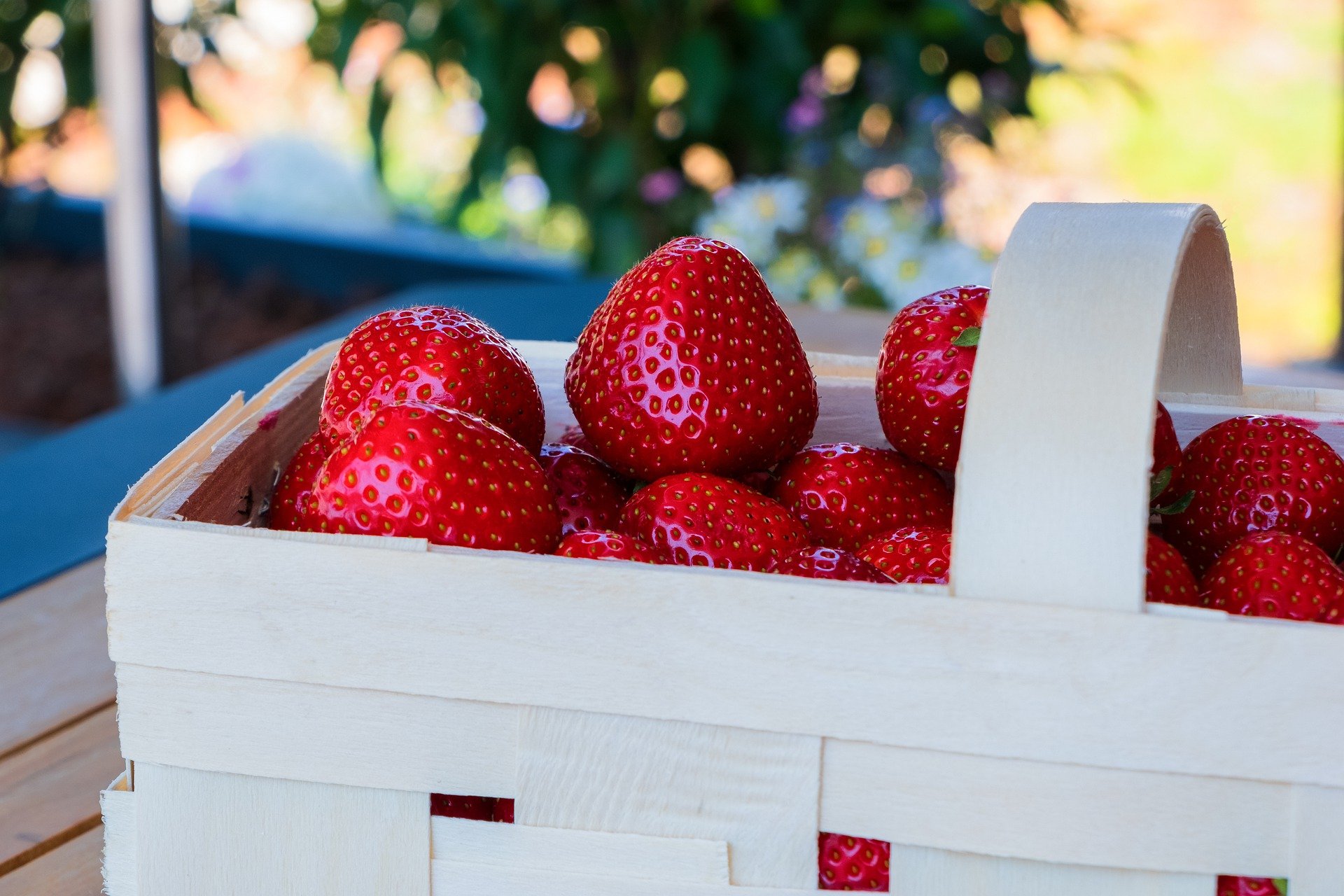
Strawberry Yogurt
Strawberry yogurt often contains both natural and added acids. The yogurt itself is acidic due to the fermentation process, and strawberry puree or flavoring adds additional acidity. However, the overall pH can be influenced by other ingredients like sugar and stabilizers.
Strawberry Ice Cream
Strawberry ice cream typically has a higher pH (less acidic) than fresh strawberries. The dairy base and added sugars help balance out the acidity of the strawberry flavoring. However, individuals with lactose intolerance may still experience discomfort due to the dairy content rather than acidity.
Strawberry Jam
Strawberry jam is often less acidic than fresh strawberries due to the high sugar content, which can mask the perception of acidity. However, commercial jams may have added citric acid as a preservative, which could increase acidity.
The Nutritional Benefits of Strawberries: Balancing Acidity with Health Advantages
While the acidity of strawberries can be a concern for some, it’s important to consider their numerous health benefits. How do the nutritional advantages of strawberries stack up against their acidic nature?

Vitamin C Powerhouse
Strawberries are an excellent source of vitamin C, with a single serving providing more than the daily recommended intake. This vital nutrient supports immune function, skin health, and acts as a powerful antioxidant.
Rich in Antioxidants
The vibrant red color of strawberries comes from anthocyanins, a type of antioxidant that may help reduce the risk of heart disease and certain cancers. These compounds, along with other polyphenols in strawberries, contribute to their anti-inflammatory properties.
Fiber Content
Strawberries are a good source of dietary fiber, which aids in digestion and can help manage blood sugar levels. This fiber content can also contribute to feelings of fullness, making strawberries a satisfying low-calorie snack.
Heart Health
Regular consumption of strawberries has been linked to improved heart health markers, including lower blood pressure and reduced LDL cholesterol levels. These benefits are attributed to the berries’ high antioxidant content and other bioactive compounds.

Given these significant health benefits, many people find that the advantages of including strawberries in their diet outweigh the concerns about acidity. For those without specific acid-related health issues, moderate consumption of strawberries as part of a balanced diet can be a nutritious choice.
Strawberry Alternatives: Low-Acid Fruit Options
For individuals who find strawberries too acidic but still crave fruity flavors, what are some low-acid alternatives? Here are several options that offer sweetness with less acidity:
- Bananas (pH 4.5-5.2)
- Melons (pH 6.1-6.7)
- Papayas (pH 5.5-6.0)
- Mangoes (pH 5.8-6.0)
- Figs (pH 5.5-6.0)
- Coconut (pH 5.5-7.8)
These fruits can be used in many of the same ways as strawberries – in smoothies, salads, or as standalone snacks. They offer various nutritional benefits and can be excellent options for those looking to reduce their intake of acidic foods.
Creating Low-Acid Fruit Salad
Try this low-acid fruit salad recipe as a strawberry alternative:

- 1 cup diced papaya
- 1 cup diced mango
- 1 sliced banana
- 1/2 cup coconut chunks
- 1/4 cup chopped fresh mint
Gently toss all ingredients together. This colorful salad provides a variety of flavors and textures without the high acidity of strawberries.
The Role of Strawberries in Different Diets
How do strawberries fit into various popular diets? Let’s explore their place in different eating plans:
Keto Diet
Strawberries are one of the few fruits that can be consumed in moderation on a ketogenic diet due to their relatively low carbohydrate content. A 100-gram serving contains about 7.7 grams of carbs, with 2 grams of fiber, resulting in 5.7 grams of net carbs.
Paleo Diet
Strawberries are generally considered paleo-friendly as they are a whole, unprocessed food. They can be enjoyed freely on this diet, which focuses on foods that our ancestors would have eaten.
Vegan and Vegetarian Diets
Strawberries are a staple in many vegan and vegetarian diets, providing essential vitamins and minerals. They’re often used as natural sweeteners in plant-based recipes.

Low FODMAP Diet
Strawberries are considered low FODMAP in servings of about 10 medium berries (140g). This makes them a suitable option for those following this diet to manage IBS symptoms.
Mediterranean Diet
Strawberries fit well into the Mediterranean diet, which emphasizes fruits, vegetables, and whole grains. They’re often enjoyed as a dessert or snack in this heart-healthy eating pattern.
While strawberries can be incorporated into many diets, it’s always important to consider individual tolerances and health conditions. Those with specific concerns about acidity should consult with a healthcare professional or registered dietitian for personalized advice.
Growing Strawberries: Does Soil pH Affect Fruit Acidity?
For gardening enthusiasts, understanding the relationship between soil pH and strawberry acidity can be fascinating. Does the acidity of the soil influence the acidity of the strawberries?
Strawberry plants generally prefer slightly acidic soil with a pH between 5.5 and 6.5. This pH range allows the plants to absorb nutrients effectively, promoting healthy growth and fruit production. However, the pH of the soil doesn’t directly correlate to the acidity of the fruit itself.

The acidity of strawberries is primarily determined by their genetic makeup and the natural development of organic acids as the fruit ripens. While extreme soil conditions might stress the plant and affect overall fruit quality, they don’t significantly alter the inherent acidity of the berries.
Tips for Growing Strawberries
- Test your soil pH before planting and amend if necessary
- Ensure good drainage to prevent root rot
- Provide full sun for at least 6 hours a day
- Water regularly, especially during fruit development
- Mulch around plants to retain moisture and suppress weeds
By providing optimal growing conditions, you can ensure your strawberry plants produce the sweetest, most flavorful fruit possible, regardless of their natural acidity.
The Future of Strawberry Cultivation: Low-Acid Varieties
As consumer preferences evolve and dietary concerns become more prevalent, agricultural researchers are exploring the development of low-acid strawberry varieties. What innovations are on the horizon for strawberry cultivation?
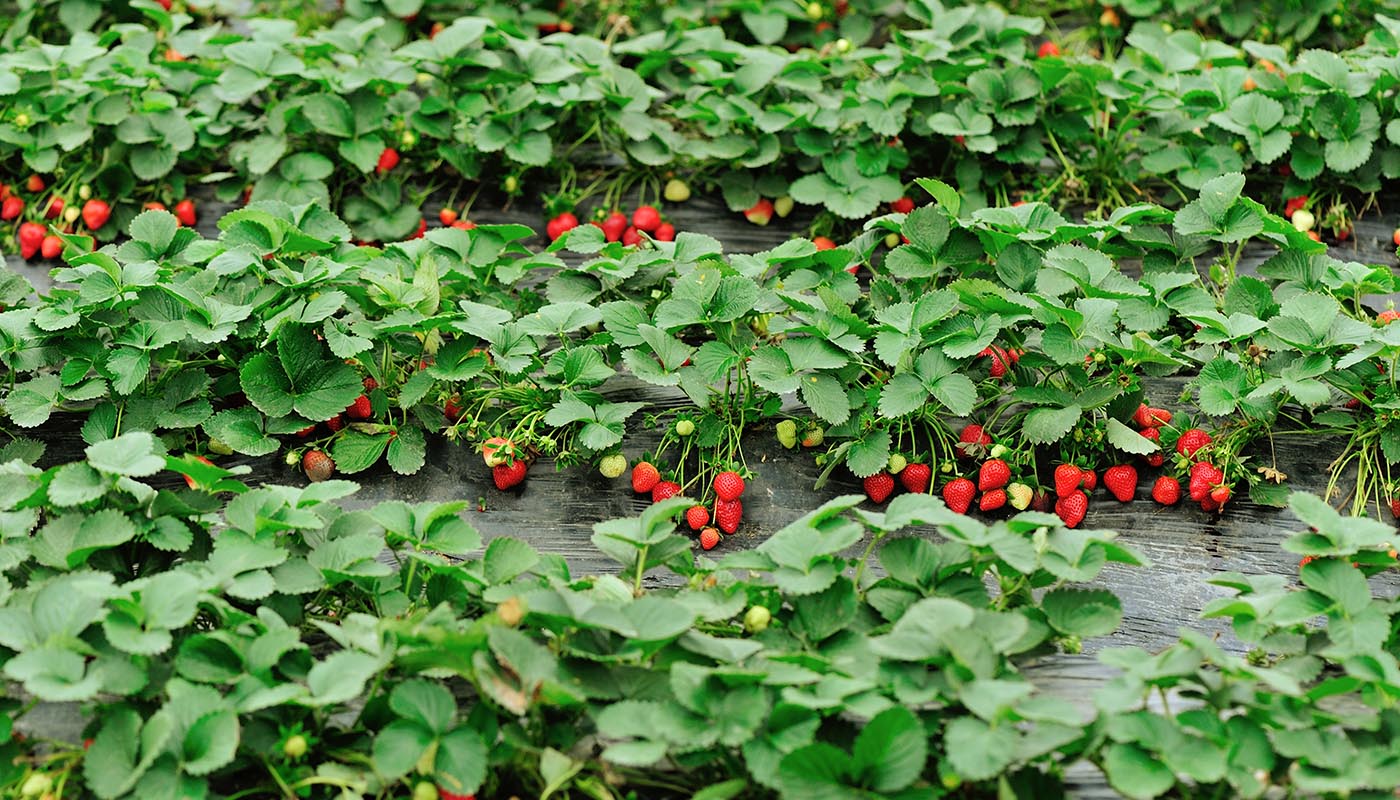
Several breeding programs worldwide are focusing on creating strawberry varieties with lower acidity while maintaining the fruit’s characteristic flavor and nutritional benefits. These efforts involve careful selection and cross-breeding of existing strawberry plants to produce offspring with desired traits.
Potential Benefits of Low-Acid Strawberries
- Increased accessibility for individuals with acid sensitivity
- Potentially longer shelf life due to reduced acidity
- New flavor profiles for culinary applications
- Possible reduction in added sugars needed in processed strawberry products
While these developments are promising, it’s important to note that breeding new fruit varieties is a long-term process. It can take many years of research and testing before a new strawberry variety is ready for commercial production.
In the meantime, current cultivation practices focus on optimizing growing conditions to produce the best possible fruit with existing varieties. Factors like proper irrigation, nutrient management, and harvesting at peak ripeness can all contribute to producing strawberries with a balanced flavor profile.
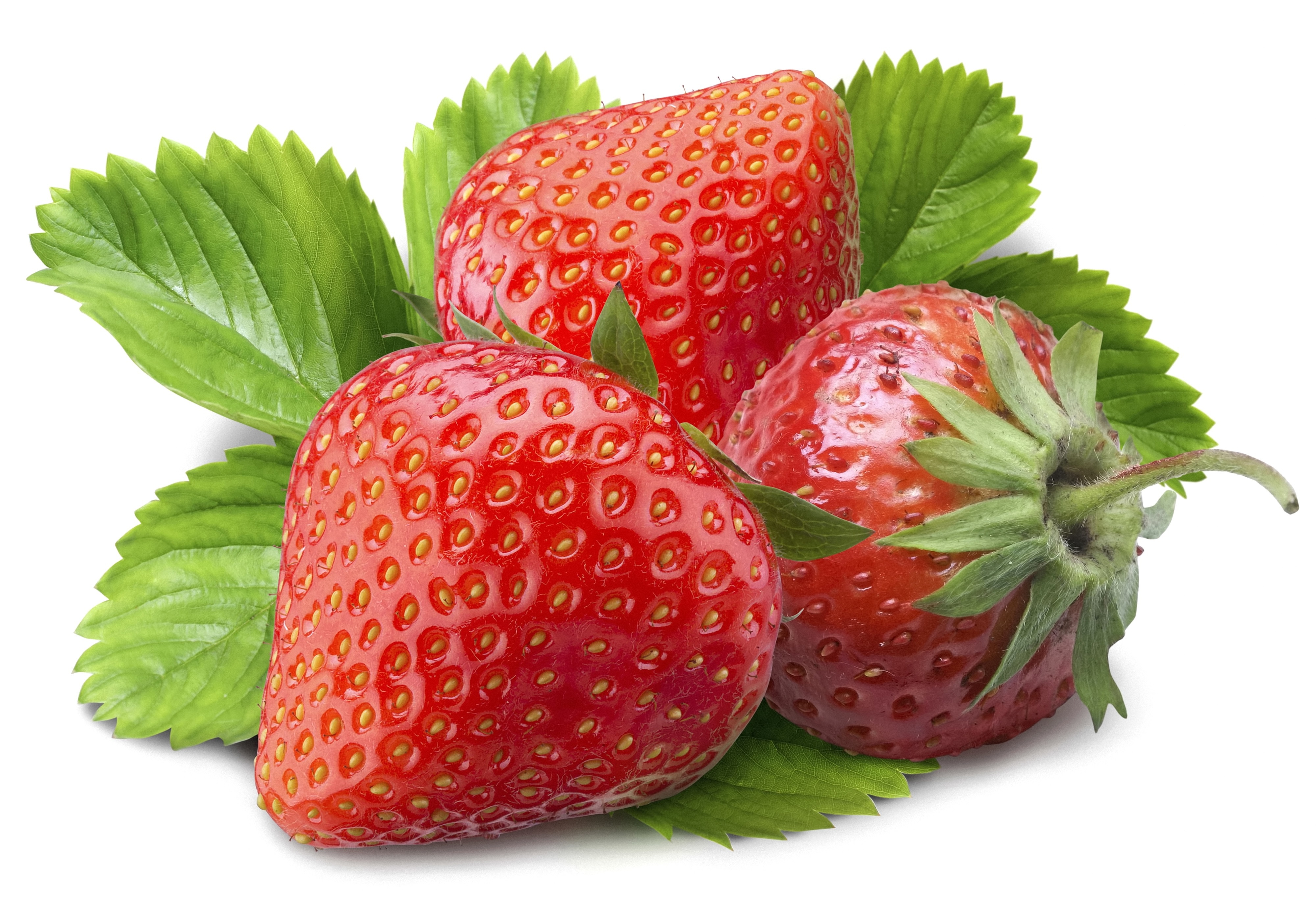
Are Strawberries Acidic?
Yes, strawberries are acidic. On the pH scale of 0 to 14, 7 is neutral acidity and getting closer to 0 means more acidic. The pH of strawberries is 3 to 3.5, which makes them highly acidic.
Are Strawberries Acidic?
Are Strawberries Bad for Acid Reflux?
Since strawberries are acidic, they may aggravate the symptoms of acid reflux, which happens when your stomach acid travels up your esophagus and gives you a burning sensation at the back of your throat (heartburn).
If you are already experiencing heartburn, it’s best to stay clear from them. But if you have a serious craving for these delicious red berries and nothing else will do, we have a few suggestions for you.
How to Make Strawberries Less Acidic?
Did you know that you can make strawberries less acidic by pairing them with alkaline foods? The logic is pretty simple: let’s say you have a glass of lemon juice and a glass of water.
You can adjust the sourness of your lemon juice by adding water to it, right? Similarly, you can adjust the pH level of acidic fruits by pairing them with alkaline foods.
Luckily, strawberries can pair with a lot of foods with delicious results. You can make nutritious smoothies, salads, and other snacks with them.
Smoothies
Smoothies are easy to make, extremely satiating, and versatile! They are a great option if you need a quick, nutritious fix. Plus, they’re an excellent medium for mixing many different food groups.
Strawberry Spinach Smoothie
Strawberry Spinach Smoothie
Preparation Time: 5 minutes
Ingredients: bananas, baby spinach, strawberries, almond or coconut milk
Put all of your ingredients into your blender and blend away until you reach a smooth consistency without chunks. You can freeze your fruits before adding them to your smoothies for a thicker milkshake-like consistency.
Salads
Just like smoothies, salads offer a delicious world of opportunities. Strawberries pair well with leafy greens like spinach, kale, and lettuce, adding crunch and sweetness to salads. You can even add quinoa and chickpeas for a protein-rich and delicious meal.
You can even add quinoa and chickpeas for a protein-rich and delicious meal.
Strawberry, Spinach, and Quinoa Salad
Strawberry, Spinach, and Quinoa Salad
Preparation Time: 20 minutes
Ingredients: Spinach, quinoa, strawberries, almond slivers
Cook your quinoa in a small saucepan and let it rest. As it’s cooling, wash and chop all of your ingredients. Combine all of them in a large bowl and season to your taste.
Since lemon juice is quite acidic, it’s best to skip it and make a simple vinaigrette with olive oil and a dash of tahini. Top it all off with almond slivers, and you’re good to go.
Snacks
You can combine your berries with condiments and sauces to lower their pH and create excellent snacks. Crackers and whipped cream make a very balanced and filling snack that won’t be very acidic.
Strawberries and Whipped Cream
Strawberries and Whipped Cream
Preparation Time: 5 to 15 minutes (you may want to refrigerate for 10 minutes)
Ingredients: Whipped Cream (you can make your own or buy ready-made)
Strawberries and whipped cream make a great sweet snack.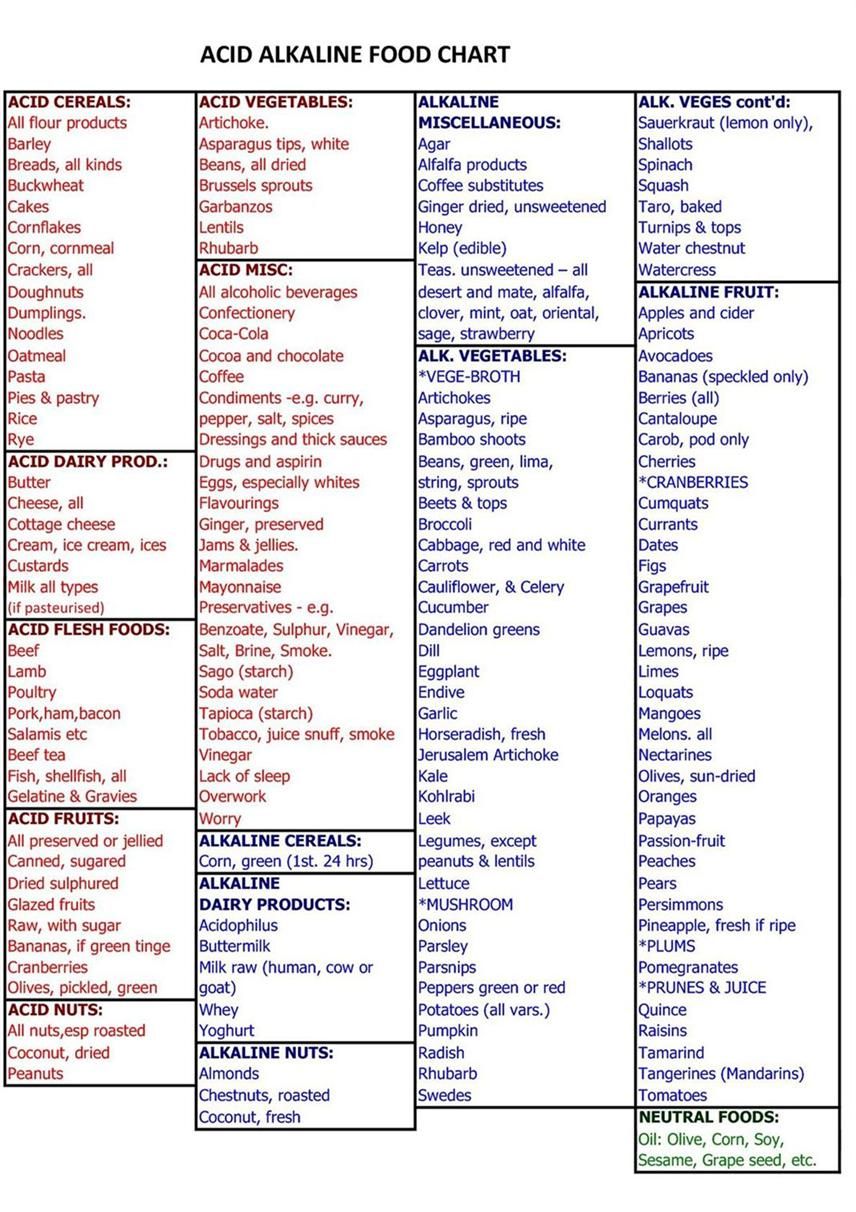 However, since regular whipping cream is not lactose-free and contains lactic acid, you may want to opt for a non-dairy whipped cream like coconut whipping cream[1] .
However, since regular whipping cream is not lactose-free and contains lactic acid, you may want to opt for a non-dairy whipped cream like coconut whipping cream[1] .
You can quickly make whipped cream with coconut cream. Refrigerate the cream overnight and whip it in a chilled bowl for about a minute until it reaches that smooth consistency. Serve with crackers, and enjoy the yum!
PH Levels of Foods You Can Pair With Strawberries
Here’s a rundown of a few simple ingredients you can pair with strawberries to make them less acidic.
| Ingredient | pH Level | How to Pair With Strawberries? |
| Spinach | 5.5 | Can be added to smoothies and salads |
| Avocado | 6.5 | Can be added to smoothies and salads |
| Dates | 8 | Can be added to smoothies and can be paired as a snack. |
| Cantaloupe | Around 6.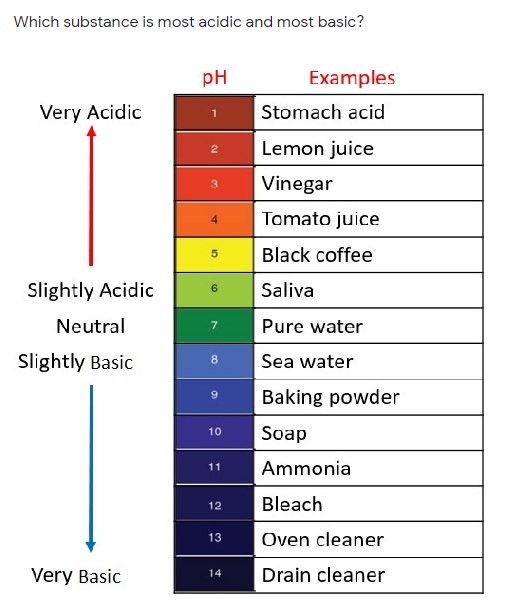 5 5 | Can be added to smoothies and can be paired as a snack. |
| Lettuce | 7 | A good base for a strawberry salad |
| Kale | 7 – 7.5 | Can be added to smoothies and salads |
| Cucumbers | Around 6 | Can be added to smoothies and can be paired as a snack. |
| Almond Milk | 6 | Can be the base of a smoothie |
| Coconut Water | 6.5 | Can be the base of a smoothie |
| Coconut Milk | 6.5 – 7 | Can be made into a sauce for a snack |
| Papaya | Around 6 | Can be added to smoothies and can be paired as a snack. |
| Bananas | Around 6 | Can be added to smoothies and can be paired as a snack. |
| Almonds | 6.9 | Can be added to salads and can be paired as a snack. |
| Cauliflower | Around 7 | Can be added to salads raw or cooked |
| Tahini | Around 6 | Sauce or condiment ingredient |
| Quinoa | Around 7 | Can be the protein base for a salad |
FAQ
Are All Strawberries Acidic?
Strawberry is a versatile fruit that can be used in many ways: fresh, dried, frozen, and cooked. However, does consuming them in various forms change their acidity? No, not all. No matter how you’ll consume them, strawberries are acidic, and their pH level does not change.
However, does consuming them in various forms change their acidity? No, not all. No matter how you’ll consume them, strawberries are acidic, and their pH level does not change.
Is Strawberry Flavored Food Acidic?
Strawberry yogurt and milkshakes are some of the most consumed strawberry-flavored foods. And if you’re wondering, they are mostly acidic.
Plain yogurt has a pH of 4.1 to 4.4, so strawberry yogurt will be acidic. Plain cow milk is slightly acidic; it has a pH of 6.1 to 6.9.
Combining milk with strawberries will make your drink slightly less acidic; however, a milkshake may have other ingredients that make it even more acidic, like chocolate or other fruits.
Do Different Types of Strawberries Have Different Acid Levels?
There are multiple types of strawberry plants with varying colors and leaves, but they’re generally categorized according to when they bear fruit. There are four main types of strawberries: summer-bearing, twice-bearing, ever-bearing, and wild strawberries.
Wild strawberries are considered to be more acidic as the pH of the soil they grow in is inconsistent. When strawberries are planted in a controlled environment, the pH of the soil would be somewhere between 5.4 to 6.5, which is the optimum soil pH level for this plant.
However, wild strawberries grow in their own endemic climates, and thus, their pH levels change, sometimes even between different crops.
Ever-bearing strawberries are usually grown in greenhouses, taste much sweeter, and are usually a little less acidic.
To Sum Up
Strawberries are naturally very tasty and sweet, but they’re also very acidic. If you’re experiencing acid reflux symptoms, you should be mindful of how often you consume them.
That said, you can pair strawberries with certain foods to lower their acidity. Consuming dates, coconut milk, or sprinkling some strawberries on your kale salad will help balance their acidity.
Are Strawberries Acidic? (Quick Facts) – The Trellis
Do you know whether strawberries are acidic or not? Most people don’t realize that these delicious fruits have a sour side to them. In this blog post, we’ll take a closer look at the acidity levels of strawberries and discuss what this means for your health. So, are strawberries acidic? Read on to find out!
In this blog post, we’ll take a closer look at the acidity levels of strawberries and discuss what this means for your health. So, are strawberries acidic? Read on to find out!
Table of Contents
What Is pH?
pH is a measure of how acidic or basic a substance is. The pH scale ranges from 0 to 14, with 0 being the most acidic and 14 being the most basic. A substance with a pH of 7 is considered neutral.
The acidity or basicity of a substance can have an effect on our health. For example, stomach acid is necessary for digestion but too much stomach acid can lead to indigestion or heartburn. Similarly, some cleaning products are acidic and can be corrosive if not used properly.
Related >> Best Pellet Grills
Can You Tell If Something Is Acidic Or Not By Tasting It?
Not necessarily. For example, lemons are very acidic but they also have a large amount of sugar, which makes them taste sweet. This is why it’s important to use a pH test strip or litmus paper to determine the acidity of a substance.
Related >> Best Propane Grills
Are strawberries acidic or alkaline?
The answer to this question is not as simple as you might think. Strawberries are considered to be a low-acid food, but they still have some acidity to them. The pH level of strawberries is between 3.0 and 3.3, making them slightly acidic. However, their sweetness often outweighs their acidity, making them taste more like a sweet fruit than an acidic ones.
When it comes to fruits and vegetables, acidity levels can vary greatly. For example, lemons are highly acidic with a pH level of 2.0 while cucumbers are more alkaline with a pH level of 6.0. So where do strawberries fall on the spectrum? As we mentioned before, strawberries are considered to be a low-acid food with a pH level of 3.0 to 3.3. This means that they are slightly acidic but not as much as other fruits like lemons or oranges.
Related >> Best Campfire Cooking Kits
What does this mean for your health?
The acidity levels of strawberries have no direct impact on your health. However, eating too many acidic foods can lead to indigestion and heartburn. If you experience these symptoms after eating strawberries, it is best to limit your intake or avoid them altogether.
However, eating too many acidic foods can lead to indigestion and heartburn. If you experience these symptoms after eating strawberries, it is best to limit your intake or avoid them altogether.
On the other hand, some research suggests that low-acid diets may help to prevent certain diseases such as cancer. More studies are needed to confirm these findings but, if you are looking to reduce your acid intake, incorporating more low-acid foods into your diet is a good place to start.
What kind of acids do strawberries contain?
While strawberries are not as acidic as other fruits, they do contain some acids. The most predominant acid in strawberries is citric acid. Other acids present in smaller amounts include malic acid, lactic acid, and acetic acid.
Tips for incorporating strawberries into your diet
There are many ways to incorporate strawberries into your diet. Here are a few ideas:
– Add them to your breakfast cereal or oatmeal
– Mix them into yogurt or use them as a topping
– Include them in a fruit salad or smoothie
– Make a homemade strawberry jam or sauce
– Use them as a decoration on cakes or cupcakes
Strawberries are versatile fruit that can be enjoyed in many different ways.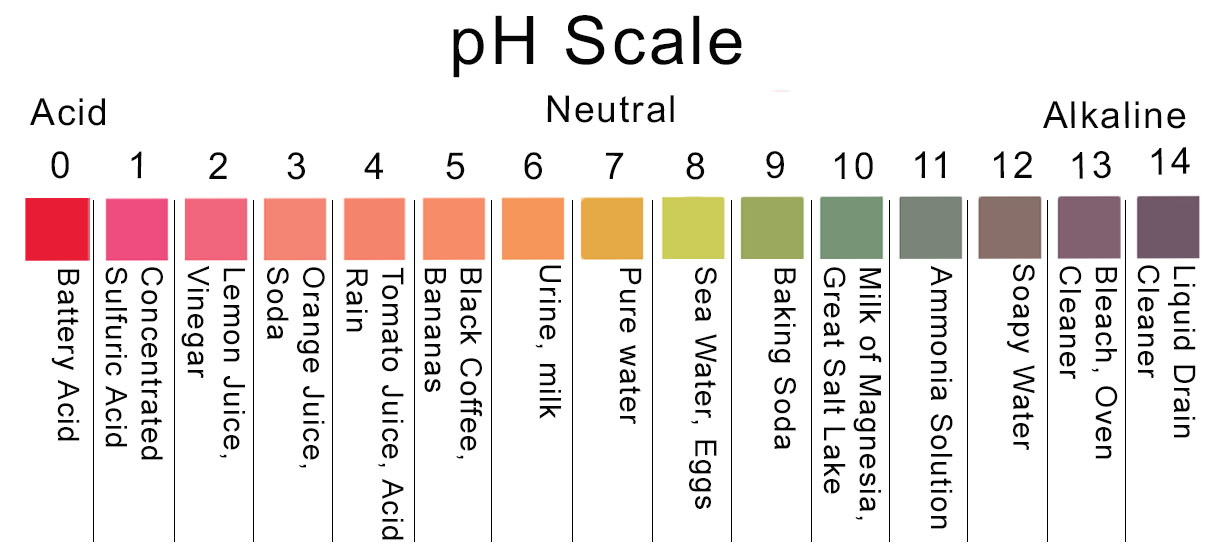 So, if you’re looking for acidic food to add to your diet, consider giving strawberries a try!
So, if you’re looking for acidic food to add to your diet, consider giving strawberries a try!
Fresh Red Strawberries For Sale In Fruit Market
Factors to consider when eating strawberries:
– The ripeness of the strawberry
– Whether you are eating them alone or with other foods
– Your personal tolerance to acidity
– If you have any medical conditions that may be affected by acidic foods
Is There a Way to Make Strawberries Less Acidic?
If you are sensitive to acidic foods, there are a few ways you can make strawberries less acidic. One way is to add them to a dish that contains other ingredients that are high in alkalinity. This will help to balance out the acidity levels. Another way is to cook the strawberries. This will also help to reduce their acidity. If you are looking for a more natural way to make strawberries less acidic, you can try soaking them in milk for 30 minutes before eating them. This method is said to help neutralize the acids in the fruit.
Nutritional benefits of strawberries:
Strawberries are a good source of vitamins and minerals, including vitamin C, folic acid, potassium, and magnesium. They also contain antioxidants that can help to protect your cells from damage. Additionally, strawberries are a low-calorie food and are a good source of fiber. This makes them a great choice if you are trying to lose weight or maintain a healthy weight.
Strawberries Aren’t Berries:
Strawberries are not actually berries. A true berry is defined as a fruit that has its seeds on the inside of the fruit. Berries all have seeds inside, and strawberries don’t have seeds inside them.
The flesh of a strawberry is actually a continuation of where the ovaries are found. When strawberries grow up to be fully ripe, their seeds will merge together into one single fruit that smells delicious and fragrant!
What’s The Best Way To Eat Strawberries?
There is no one right answer to this question. Some people prefer to eat them raw, while others like to cook them first.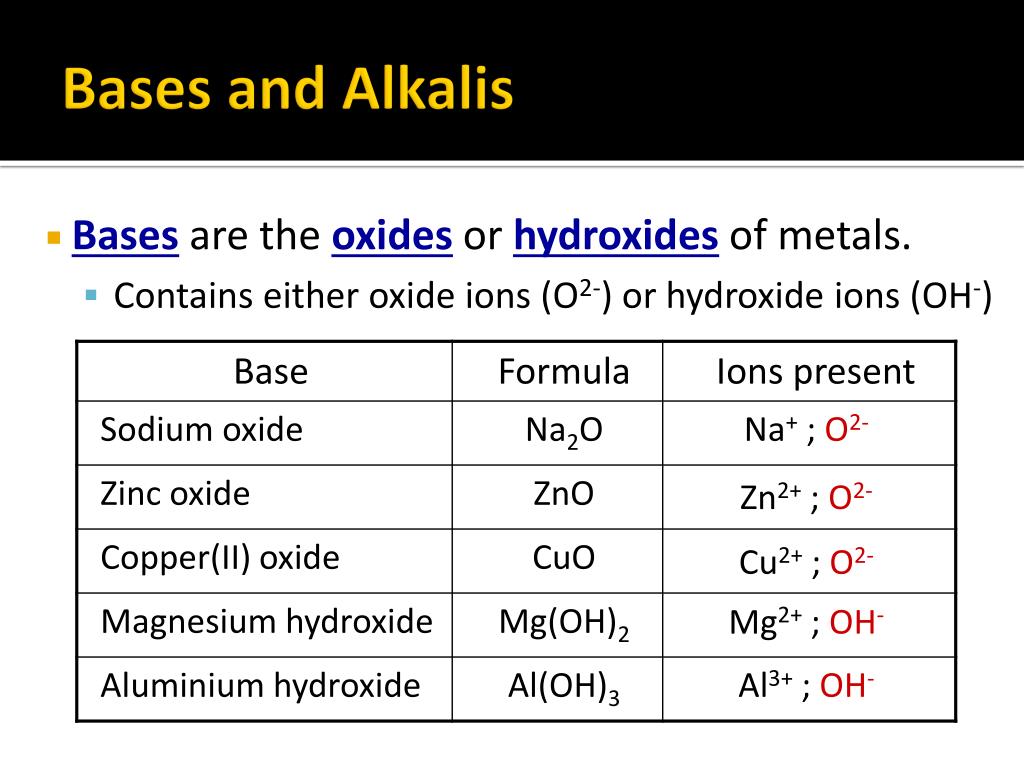 You can also add them to other dishes or use them as a topping for desserts. Ultimately, it comes down to personal preference. If you are sensitive to acidic foods, you may want to cook the strawberries before eating them. This will help to reduce their acidity levels. otherwise, feel free to enjoy them any way you like!
You can also add them to other dishes or use them as a topping for desserts. Ultimately, it comes down to personal preference. If you are sensitive to acidic foods, you may want to cook the strawberries before eating them. This will help to reduce their acidity levels. otherwise, feel free to enjoy them any way you like!
FAQs
Can You Eat Strawberries Every Day?
Yes, you can eat strawberries every day. However, if you are sensitive to acidic foods, you may want to limit your intake or choose another fruit that is lower in acidity.
If I Eat Strawberries, Will I Get Heartburn?
Heartburn is caused by stomach acid rising up into the esophagus. While eating strawberries will not cause heartburn, consuming too many acidic foods can trigger symptoms. If you are prone to heartburn, it is best to limit your intake of acidic foods, including strawberries.
Can Strawberries Cause Diarrhea?
There is no evidence to suggest that strawberries cause diarrhea.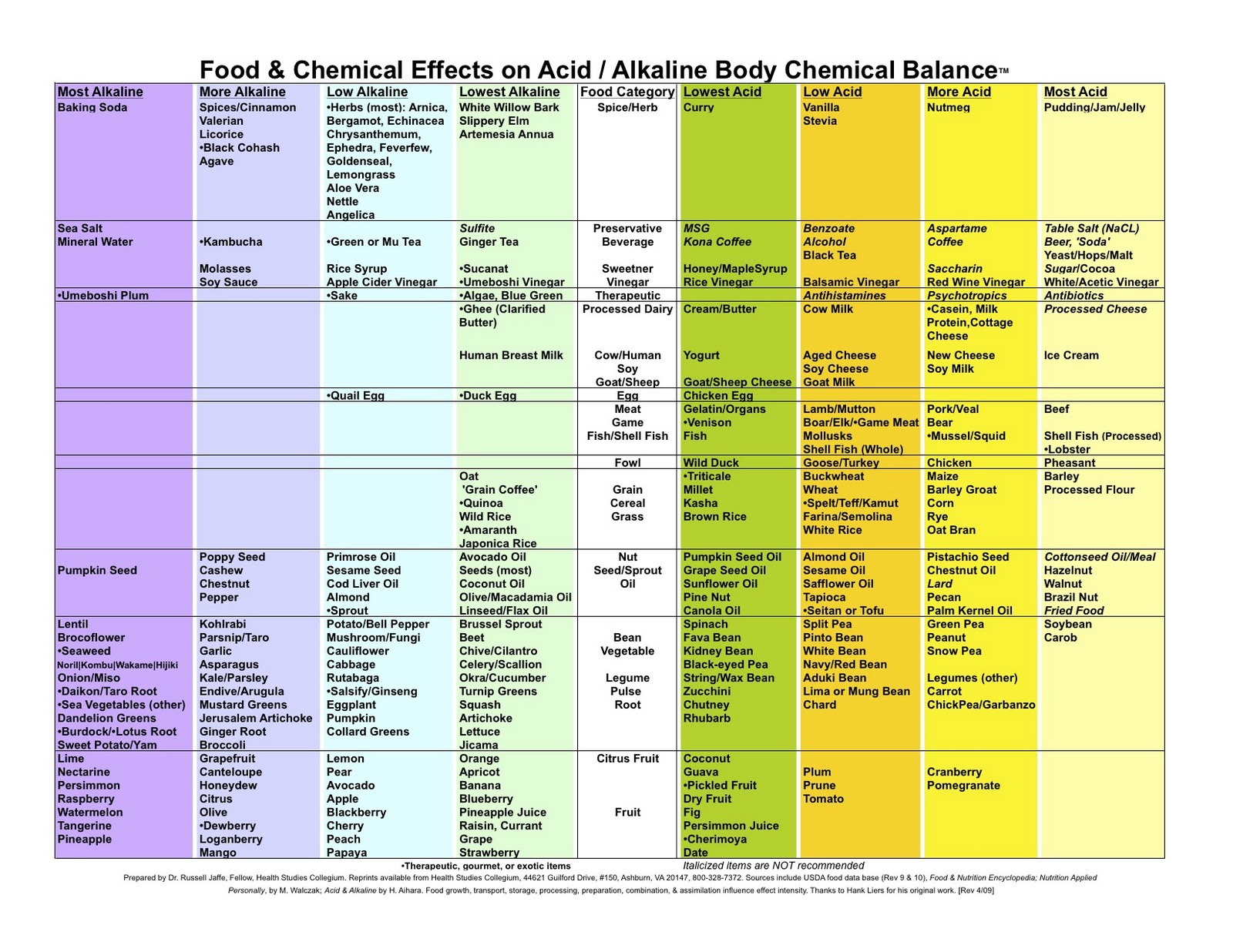 However, if you have a sensitivity to acidic foods, you may experience digestive problems after eating them. If this is the case, it is best to avoid strawberries or eat them in moderation.
However, if you have a sensitivity to acidic foods, you may experience digestive problems after eating them. If this is the case, it is best to avoid strawberries or eat them in moderation.
Do Strawberries Help With Acid Reflux?
There is no scientific evidence to support the claim that strawberries help with acid reflux. However, some people find that eating strawberries helps to ease their symptoms. If you are considering adding strawberries to your diet, it is best to speak with your doctor first.
Are Strawberries Good for Acid Reflux?
There is no scientific evidence to support the claim that strawberries are good for acid reflux. However, some people find that eating strawberries helps to ease their symptoms. If you are considering adding strawberries to your diet, it is best to speak with your doctor first.
Where Are Strawberries Produced?
According to the USDA, California produces the most strawberries in the United States. In 2017, California produced 806 million pounds of strawberries.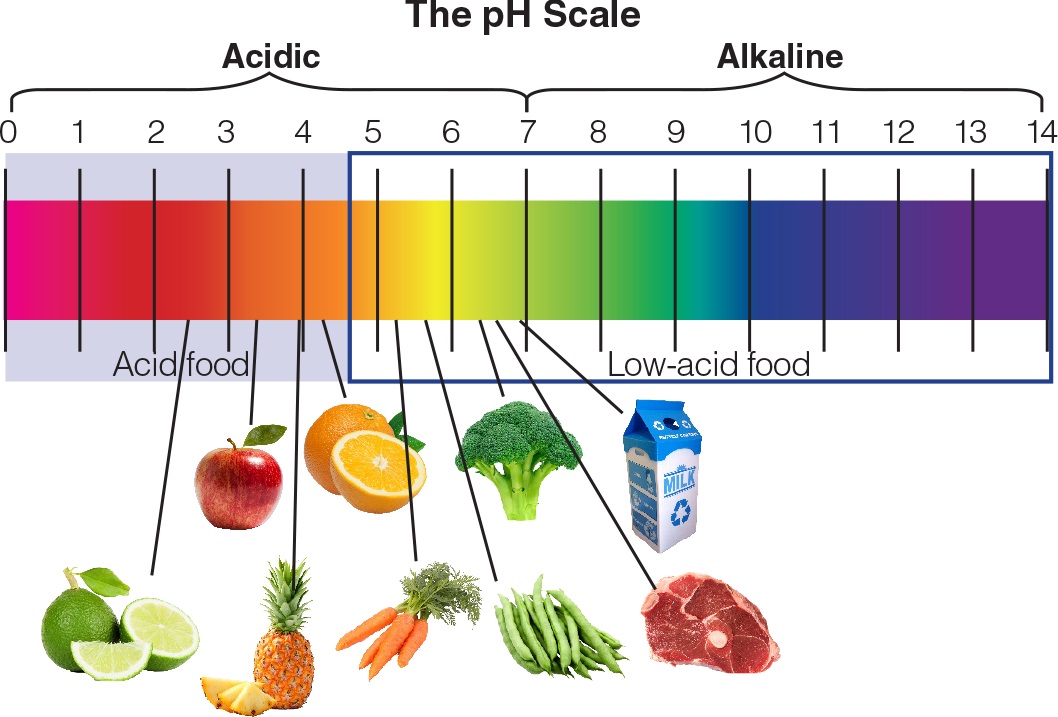 Florida is a close second, producing 243 million pounds of strawberries. Other states that produce strawberries include Washington, Oregon, Michigan, and New Jersey.
Florida is a close second, producing 243 million pounds of strawberries. Other states that produce strawberries include Washington, Oregon, Michigan, and New Jersey.
When Are Strawberries in Season?
The strawberry season varies depending on the region. In the United States, strawberries are typically in season from April to June. However, you may be able to find them year-round at your local grocery store.
What Country Consumes the Most Strawberries?
There is no definitive answer to this question. However, according to a report from the United Nations Food and Agriculture Organization, Spain is the leading producer of strawberries. In 2016, Spain produced 1,842,000 metric tons of strawberries. Other leading producers of strawberries include China, Egypt, Mexico, and Turkey.
How Long Do Strawberries Last?
Strawberries typically last for 3-5 days in the fridge. However, if they are not properly stored, they can spoil quickly. To extend their shelf life, strawberries should be placed in a container with ventilation and stored in the fridge.
Do Strawberries Have Seeds?
Yes, strawberries have seeds. Each strawberry has approximately 200 seeds on the surface of the fruit.
Do Strawberries Have Pesticides?
Pesticides are commonly used on strawberry crops to protect the fruit from bugs and fungi. However, there are ways to reduce your exposure to pesticides. You can buy organic strawberries or wash them thoroughly with water and vinegar.
Are Fresh Strawberries Acidic?
Fresh strawberries are slightly acidic. The acidity of strawberries ranges from pH 3.3 to 3.5. This makes them one of the more acidic fruits. However, they are not as acidic as oranges, lemons, or grapefruits.
Do Strawberries Contain Vitamin C?
Yes, strawberries contain vitamin C. One cup of strawberries contains approximately 85mg of vitamin C. This is about 140% of the recommended daily intake for adults. Vitamin C is an important nutrient that helps to boost immunity and protect against disease.
Do Strawberries Contain Fiber?
Yes, strawberries contain fiber.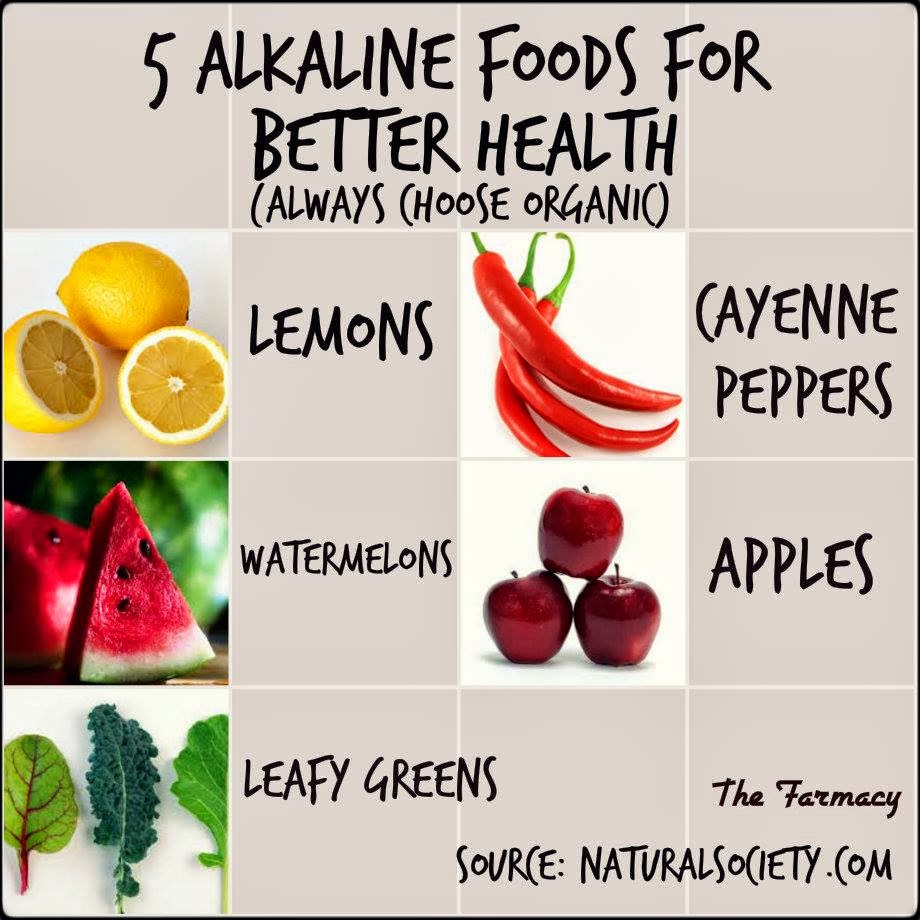 One cup of strawberries contains 3 grams of fiber. Fiber is an important nutrient that helps to promote digestive health and prevent constipation.
One cup of strawberries contains 3 grams of fiber. Fiber is an important nutrient that helps to promote digestive health and prevent constipation.
Are Frozen Strawberries Acidic?
Frozen strawberries are more acidic than fresh strawberries. The acidity of frozen strawberries ranges from pH 3.0 to 3.3. This is due to the fact that they are picked at their peak ripeness and then flash frozen. This preserves their natural acidity.
Are Dried Strawberries Acidic?
Dried strawberries are more acidic than fresh or frozen strawberries. The acidity of dried strawberries ranges from pH 2.5 to 3.0. This is due to the fact that they are picked at their peak ripeness and then dried. This concentrates their natural acidity.
Are Strawberries More Acidic Than Oranges?
No, strawberries are not more acidic than oranges. Oranges have a pH range of 3.3 to 4.0. This makes them slightly more acidic than strawberries. However, both fruits are considered to be relatively low on the acidity scale.
Are Grapes or Strawberries More Acidic?
Grapes are more acidic than strawberries. The acidity of grapes ranges from pH 2.9 to 3.4. This makes them slightly more acidic than strawberries. However, both fruits are considered to be relatively low on the acidity scale.
Are Strawberries More Acidic Than Lemons?
Yes, strawberries are more acidic than lemons. Lemons have a pH range of 2.0 to 2.6. This makes them much more acidic than strawberries. However, both fruits are considered to be relatively low on the acidity scale.
Are strawberries acidic for babies?
There is no definitive answer to this question. However, according to a report from the United Nations Food and Agriculture Organization, Spain is the leading producer of strawberries. In 2016, Spain produced 1,842,000 metric tons of strawberries. Other leading producers of strawberries include China, Egypt, Mexico, and Turkey.
Can you eat strawberry stems?
Yes, you can eat strawberry stems.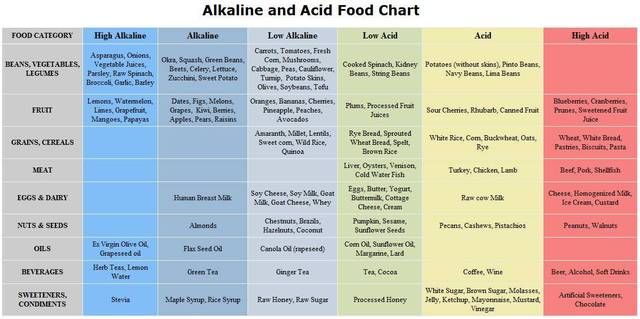 They are not poisonous and will not make you sick. However, some people find them to be bitter in taste. If you do not like the taste of strawberry stems, you can remove them before eating the fruit.
They are not poisonous and will not make you sick. However, some people find them to be bitter in taste. If you do not like the taste of strawberry stems, you can remove them before eating the fruit.
Can guinea pigs eat strawberries?
Yes, guinea pigs can eat strawberries. Strawberries are a good source of vitamin C for guinea pigs. However, they should only be given in moderation as they are high in sugar. Too much sugar can lead to obesity and other health problems in guinea pigs.
Which fruits are acidic in nature strawberries, raspberries, and blueberries?
All of these fruits are acidic in nature. This is due to the fact that they contain citric acid. Citric acid is a naturally occurring compound that gives these fruits their tart flavor.
Learn More About Grilling
If you want to learn more about grilling, check out these other helpful resources!
What kind of soil do strawberries like: acidic or alkaline
- 1 Choosing a place for strawberries
- 2 What kind of soil to plant strawberries in
- 2.
 1 Composition
1 Composition - 2.2 Acidity 9000 6
- 2.3 Fertilizing the soil before planting
- 2.
Strawberry or garden strawberry is a berry whose taste characteristics are directly dependent on the soil where it grows. Therefore, when forming beds, it is worth paying special attention not only to their location, but also to the composition and acidity of the soil.
Choosing a place for strawberries
The place for strawberries should meet the following requirements:
- well lit throughout the day. When in the shade, garden strawberries develop leaves more actively than fruits. In addition, the berries will be significantly more acidic;
- the groundwater level should not exceed one meter. With constant contact with moisture, the roots of the plant will rot and the bush will deteriorate;
- the best neighbors for the beds are currant and gooseberry bushes;
- the landing site must be level or slightly sloped to the southwest;
- if there is a slope, the rows should be across it, not along it.
 Thus, melt water will linger in the garden in the spring, and a heavy downpour will not wash away the topsoil;
Thus, melt water will linger in the garden in the spring, and a heavy downpour will not wash away the topsoil; - are categorically not suitable for planting strawberries on steep slopes, lowlands and places with thickets of perennial weeds.
Important! If the site has a high groundwater level, then it is necessary to plant strawberries on bulk ridges 15-20 cm high.
What kind of soil to plant strawberries in
If the soil is chosen incorrectly, the strawberries will not die on it, but the berries will become small and sour. The yield will also be significantly reduced.
Soil requirements for growing garden strawberries:
- high moisture level – from 70 to 90%, without liquid stagnation;
- constant access of oxygen to the roots;
- neutral acidity.
Absolutely not suitable :
- clay. It retains moisture, which contributes to decay.
 And also, it freezes deeply and quickly;
And also, it freezes deeply and quickly; - sand. It contains practically no nutrients, and under the influence of sunlight, moisture quickly evaporates;
- peat and lime. The composition and acidity of these soils do not meet the requirements of the plant.
The best option is sandy loam or loamy soil. Both options pass air well, retain moisture and do not form crusts on the surface.
Composition
If the soil is not ideal for planting strawberries, it can be improved with the composition. To do this, it is necessary to add additional elements to the bed, which depend on the initial type of soil:
- loamy and sandy loam does not require additions, except for fertilizers;
- Clay can be improved by adding river sand or sawdust. It has a positive effect on the composition and cultivation of green manure in the garden for several years;
- can be supplemented with sand with fertilizer and white clay.
 Another useful element is humus or sod;
Another useful element is humus or sod; - lime is rich in calcium, which can be neutralized by loamy soil and organic fertilizers;
- soddy-podzolic and other acid soils contain few minerals. To replenish them, dolomite flour, lime, ash and all types of fertilizers are added.
Acidity
The best soil for strawberries is slightly acidic or neutral with a pH of 5.5-7.
Help! You can determine the level of acidity using litmus paper. In gauze, you need to collect a handful of earth and lower it, along with a piece of paper, into a glass of water. Based on the color of staining, determine the level of acidity. It must be blue or green.
Increased acidity will damage the root system. The bush will develop slowly due to a lack of nitrogen and phosphorus with a simultaneous excess of iron and aluminum.
Hyperacidity can be identified by the following visual signs:
- red streaks or rust deposits on the surface;
- abundance of horsetail and sedge;
- large population of woodlice.

To reduce the acidity of , lime is used – 40-50 kg per hundred square meters of land. If you apply this fertilizer twice a season and completely dig up the site, then it will take several years to change the acidity.
Alkaline soil is also not suitable for strawberries. It has an insufficient amount of nitrogen and phosphorus, an excess of copper and zinc. The leaves of the bushes on such beds curl and fall off. For acidification of organic fertilizer is actively used.
Fertilizing the soil before planting
Top dressing ensures good establishment of bushes and increases yield. When planting strawberries in the spring, the beds should be prepared in the fall, around September.
For 1 sq. m. of land is required to contribute:
- 7 kg of humus;
- 30 g potassium sulfate;
- 200 g wood ash.
Spread all the ingredients over the surface and dig onto the shovel bayonet.
Attention! It is strictly forbidden to use fresh manure. It will burn the young root system of the plant.
In the spring of , you can additionally apply 20 g of superphosphate and potassium sulfate per square meter of bed.
Tasty, sweet and large strawberries can only be grown on the right soil. If the initial characteristics of the site do not meet the desired requirements, then they can be improved by applying fertilizers and other useful elements.
Are strawberries acidic or alkaline?
Fresh fruit alkaline but should be eaten alone or at least before any other meal. When combined with fats and proteins, they ferment causing indigestion and acidity.
Similarly, what kind of acid is strawberries? Citric and malic acids form the main organic acids found in strawberries, accounting for more than 90% of all organic acids (Kallio 2000).
Which fruit is good for acid reflux? Melons. Watermelon, cantaloupe, and honeydew are low acid fruits that are some of the best foods for acid reflux.
Accordingly, what foods help get rid of acid reflux? Foods that help prevent acid reflux
- Whole grains such as oatmeal, couscous and brown rice.
- Root vegetables such as sweet potatoes, carrots and beets.
- Green vegetables such as asparagus, broccoli and green beans.
Also, what food causes acid reflux?
Heartburn triggers: heartburn and diet
black pepper, garlic, raw onions and other spicy foods. chocolate. citrus fruits and foods such as lemons, oranges, and orange juice. coffee and caffeinated drinks, including tea and sodas.
Contents
Do strawberries have a high pH?
pH is a measure of the activity of hydrogen ions (H+) in a solution and therefore its acidity or alkalinity.
pH in common foods such as apples, oils, wines and more.
| Product | Approximate pH |
|---|---|
| Spinach | 5.1 – 5.7 |
| squash | 5.0 – 5.4 |
| Strawberry | 3.0 – 3.5 |
| strawberry jam | 3.0 – 3.4 |
What relieves heartburn at night?
- Sleep with your upper body elevated.
- Wear loose clothing.
- Avoid foods that cause heartburn.
- Avoid late meals or large meals.
- Relax when you eat.
- Stay upright after eating.
- Please wait to practice.
- Chewing gum.
Why do I get heartburn so often?
If you have frequent or persistent heartburn (more than twice a week or heartburn every day), you may have gastroesophageal reflux disease (GERD). GERD is a digestive disorder that affects the lower esophageal sphincter (LES), the muscle that connects the esophagus and stomach.
What should I eat to avoid heartburn?
Chocolate, regular corn and potato chips, high-fat cookies, cakes, doughnuts, creamy and fatty salad dressings, fried or fatty foods in general. Fruits, vegetables and juices. Orange juice, lemon, lemonade, grapefruit juice, cranberry juice, tomato, mashed potatoes, french fries, raw onion, potato salad.
Does drinking water help acid reflux?
In general, drinking water can help balance the pH of particularly acidic foods, which can help reduce the risk of acid reflux. Research shows that drinking mineral water high in bicarbonate can help reduce the frequency and severity of acid reflux.
Why do I suddenly have heartburn?
“This can happen for several reasons that cause abnormally high intra-abdominal pressure, including being overweight or obese, overeating frequently, stuffing up too quickly after meals, chronic straining or coughing, or chronic heavy lifting. As a rule, these are people who are more susceptible to GERD.”
As a rule, these are people who are more susceptible to GERD.”
How to make strawberries less acidic?
Combining sour strawberries with alkaline foods can help neutralize them. For example, if you are making a strawberry smoothie, you can use unsweetened almond milk as the liquid.
What are the benefits of strawberries?
These powerful little packets protect your heart, increase HDL (good) cholesterol levels, lower blood pressure and protect against cancer. Rich in vitamins, fiber and particularly high levels of antioxidants known as polyphenols, strawberries are free of sodium, fat, cholesterol and are a low-calorie food.
Which fruits are high in alkali?
Fruit Selection
Believe it or not, lemons have an alkaline value of +9.9. Add it to drinks or sprinkle it on salads to replace high-calorie, high-acid dressings. Other highly alkaline fruits include avocados at +15. 6 and tomatoes at +13.6. Bananas, pineapples, and oranges are also good high-alkaline fruits.
6 and tomatoes at +13.6. Bananas, pineapples, and oranges are also good high-alkaline fruits.
Does water help with acid reflux?
Water. In general, drinking water can help balance the pH of particularly acidic foods, which can help reduce the risk of acid reflux. Research shows that drinking mineral water high in bicarbonate can help reduce the frequency and severity of acid reflux.
Does drinking water help with heartburn?
Sometimes, when symptoms of heartburn appear, a few sips of water bring relief. This may be the result of acids being neutralized by water and flushed out of the esophagus. Water has a pH of 7, which is neutral. This dilutes the more acidic stomach fluids, bringing relief.
Do bananas help with heartburn?
Eating bananas can help soothe the stomach
A portable healthy snack, bananas can sometimes help reduce heartburn. Dr. Nusbaum told INSIDER that banana’s natural pH can help soothe the stomach, and he said he recommends them for those suffering from acid reflux.
Is it normal to have heartburn every day?
Generally speaking, heartburn is not serious. An occasional bout of heartburn usually means that the food the person has eaten has produced too much acid in the stomach. If a person suffers from heartburn frequently or every day, it may be a symptom of a more serious condition called gastroesophageal reflux disease, or GERD.
What are the 4 types of acid reflux?
Four stages of GERD and treatment options
- Stage 1: Mild GERD. Patients experience mild symptoms once or twice a month.
- Stage 2: moderate GERD.
- Stage 3: Severe GERD.
- Stage 4: Precancerous reflux lesions or cancer of the esophagus.
Does water help with heartburn?
Sometimes, when symptoms of heartburn appear, a few sips of water bring relief. This may be the result of acids being neutralized by water and flushed out of the esophagus. Water has a pH of 7, which is neutral. This dilutes the more acidic stomach fluids, bringing relief.
Water has a pH of 7, which is neutral. This dilutes the more acidic stomach fluids, bringing relief.
Why does heartburn get worse when I lie down?
When you lie down, you lose the effect of gravity on food passing through your digestive system. Lying down also prevents bile and acids from entering the esophagus by gravity, causing heartburn. Because of this, for many people, heartburn gets worse at night.
What is the difference between heartburn and acid reflux?
“Heartburn is a condition where you feel a burning sensation behind your breastbone, and this can be a symptom of reflux,” says Dr. Shah. Reflux is the medical term for the passage of stomach contents into the esophagus. Heartburn is one of the common symptoms. ”
Does Coke help acid reflux?
“Sodas cause bloating,” Mausner says. And if your stomach is bloated, it increases pressure on the esophageal sphincter, promoting reflux.

 1 Composition
1 Composition Thus, melt water will linger in the garden in the spring, and a heavy downpour will not wash away the topsoil;
Thus, melt water will linger in the garden in the spring, and a heavy downpour will not wash away the topsoil; And also, it freezes deeply and quickly;
And also, it freezes deeply and quickly; Another useful element is humus or sod;
Another useful element is humus or sod;